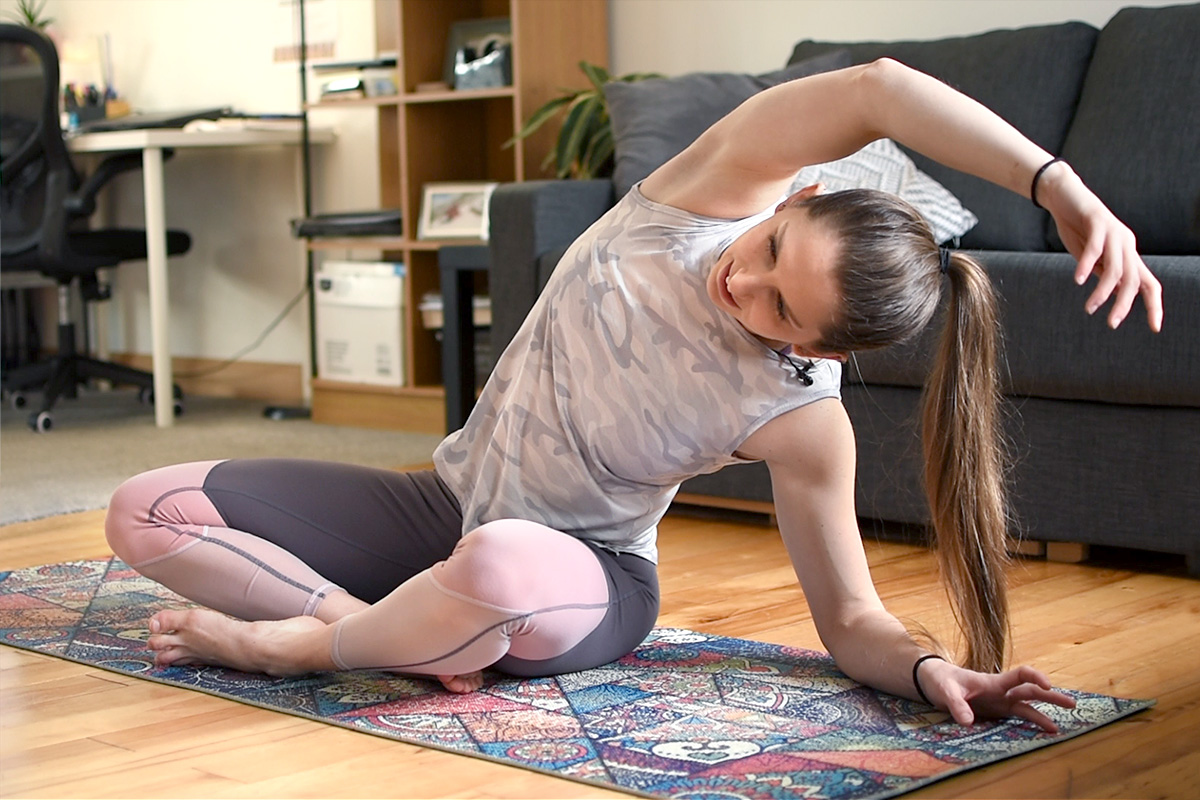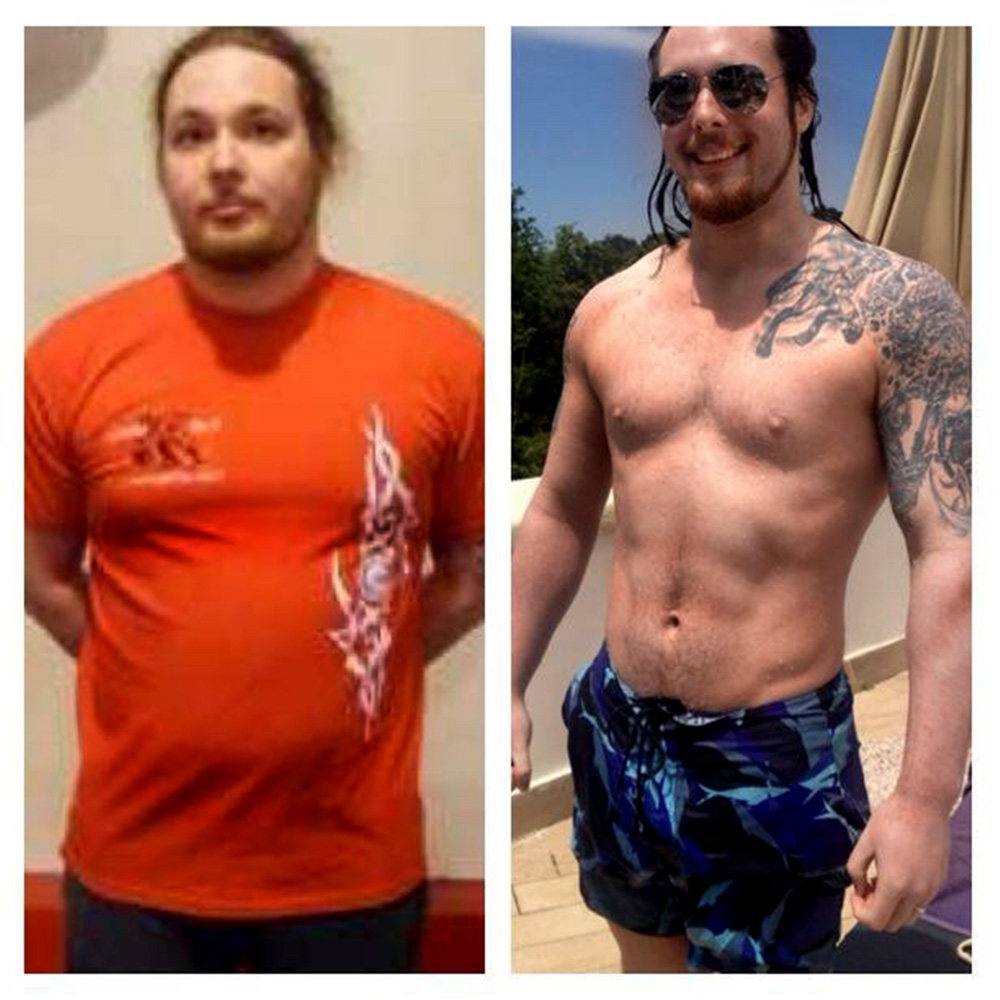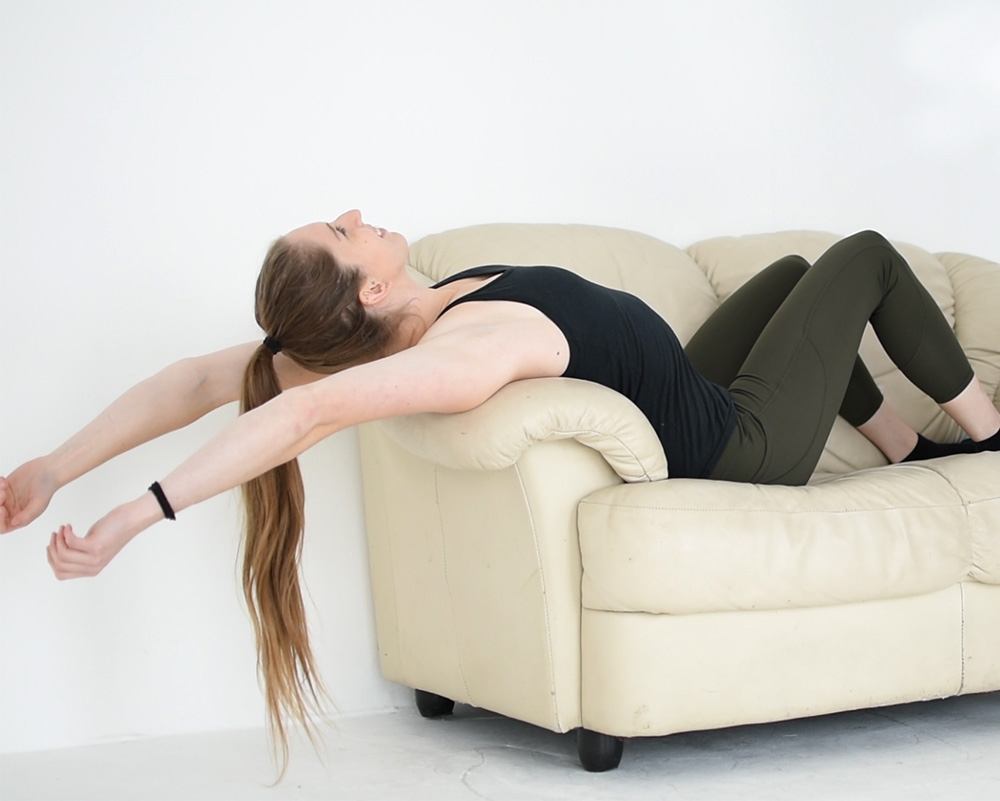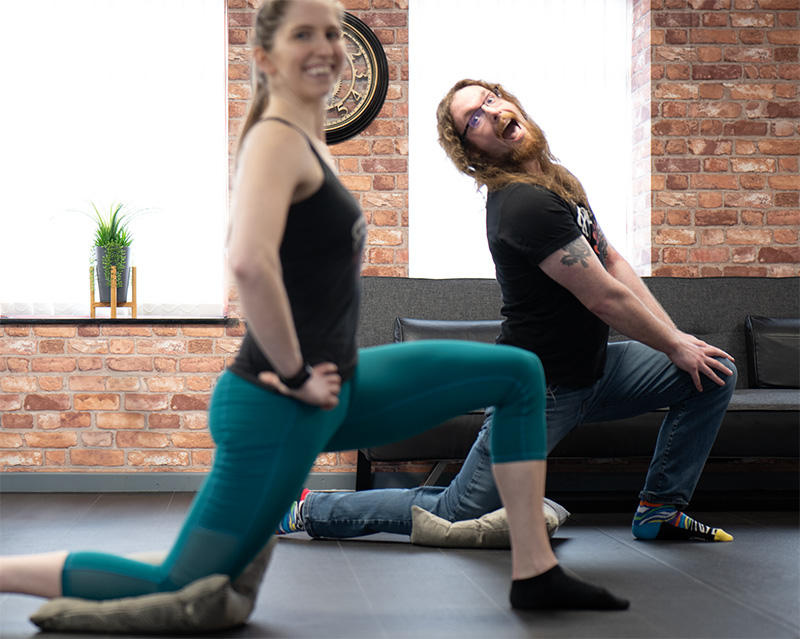How to Care About Your Flexibility (3 Ways To Start A Habit)
12 min read.
Deep down we all have things we know we “should” be doing.
Sometimes we do a bit of the thing, but nowhere near to the level we know we should do to make the progress we want.
Like a never-ending cycle of guilt, followed by justification of why you haven’t been doing the thing, and then the safety net of saying you’ll start next week... or tomorrow... or Monday…
It might be working on a skill, a new habit, your diet, making time for your family, making time for a hobby, trying to shave more often (one of mine)
But today I’m focused on the stuff you KNOW you should be doing for you flexibility!
How your body moves!
Today we’ll go through three strategies to help you actually become consistent, to stop just thinking about moving better and actually start!
1. Try More Than Once (Failing is Ok)
2. Build A Habit
Move Better, Feel Better
Before we get stuck in, I want to just remind you of why this is so important.
It’s never too late, and it’s never impossible to make progress, but the longer you leave it the harder it becomes to start. No matter where you’re currently at, how you feel, or how “far gone” you think you might be, the best possible time to start moving & working on your flexibility is right now!
When I was 21, I was overweight, smoked 30-40 cigarettes a day and just felt awful all the time. I was unfit, never had any energy, struggled to tie my shoelaces, it was a big deal if I had to sit on the floor and try to get up again and I was constantly complaining about hip pain….
Absolutely everything took more effort than it should, it was exhausting!
It can become a vicious cycle: when you don’t spend time moving, you become sore and can feel tired & irritable… so you don’t feel like moving.
But it needs to be challenged. It can be really hard at first - especially starting from complete scratch like I did.
Skip forwards over 15 years and now I love being active, walking, training, moving and feel great physically all the time. Simply because I started caring about how I moved!
1. Try More Than Once (Failing is Ok)
One thing I can’t stress enough to you is that it is going to take some fumbling around and learning when you first start.
As a coach, I often have people telling me:
“I already tried that, and it didn’t work”.
When you feel like you’ve already “put the effort in” or “done the work” and still are in pain or full of aches, pains & niggles it can be really disheartening…
…But, how do you know if you did it right?
Maybe your technique was off, or you weren’t working at the right difficulty level for you, maybe a different variation would suit your body better, maybe you didn’t do it for long enough…
We should always challenge the “tried that” mentality, (by the way, literally doing something once and declaring it useless because you didn’t get immediate relief is NOT “trying” something).
When starting something new, set yourself a target that lasts for AT LEAST 2 weeks, ideally month. For example:
- I’m going to try doing 5 mins of 90/90s every day for 2 weeks
- I’m going to do some neck stretches every day for a month
- I’m going to complete Bulletproof Knees twice a week for a month
Make notes on your phone or in a notebook about how you feel on the first day, then check in again on the last day. If you’ve made no progress ONLY THEN can you decide that particular thing hasn’t helped.
And to make this even more effective remember these key points:
• You may SUCK at the exercise/movements at first
That’s not a reason to stop or give up, instead ask for help & regressions you can do instead
That’s not a reason to stop or give up, instead ask for help & regressions you can do instead
• You may feel weird aches & pains as you work on new things
This is normal! Your body may be changing very old & established movement patterns. If you feel any sharp, severe, or acute pain though you should go & see a specialist!
This is normal! Your body may be changing very old & established movement patterns. If you feel any sharp, severe, or acute pain though you should go & see a specialist!
• You might miss some days
We’re not perfect, but missing one day does not mean you’ve failed, just make sure you never miss two in a row!
2. Build A Habit
Knowing that you need repetition to make a change is all well and good, but spending 2 weeks just thinking about doing it still isn’t very productive. So, here’s ways to get yourself consistently doing the work.
If you’re familiar with the infamous Atomic Habits by James Clear, he sets out a framework for building a good new habit that we’re going to use for our own purposes:
1. Make it Obvious
• Set a time to do your new flexibility/movement.
• Set a time to do your new flexibility/movement.
What time suits you best? When you first get up? Before bed? First thing after work before you settle? The best time is the time YOU will stick to
• Set an environment
Make a space for yourself to move. Will the living room be best? Your bedroom? Maybe the only space you have is on your bed – wherever it is, make sure it’ll be available during your set time.
Make a space for yourself to move. Will the living room be best? Your bedroom? Maybe the only space you have is on your bed – wherever it is, make sure it’ll be available during your set time.
• “Stack” your new habit on top of an existing one, using it as a trigger
Is there something you already do daily that could align with your timeslot? As soon as you’ve brushed your teeth do you hop down to do your 90/90s? Coming in the door from work do you immediately take your shoes off and do your ankle stretches? Every time you walk up the stairs you do 3x Splits squats per side?
2. Make it Attractive
• Pair your movement with something you want to do
For example you can listen to music/podcast while moving, or make yourself an awesome cup of coffee to drink as you stretch, or even use it as a reason to spend time with a friend, family member or child!
• Pair your movement with something you want to do
For example you can listen to music/podcast while moving, or make yourself an awesome cup of coffee to drink as you stretch, or even use it as a reason to spend time with a friend, family member or child!
• Join a culture where the new behaviour is normal
You can’t get any more perfect than the Simplistic Mobility Method group where we all support each other in new movement pursuits!
You can’t get any more perfect than the Simplistic Mobility Method group where we all support each other in new movement pursuits!
3. Make It Easy
• Reduce number of steps required to do your new habit
• Reduce number of steps required to do your new habit
Try to wear comfortable clothes that you don’t ned to change out of to move, make sure any equipment you need is kept in your movement space, bookmark any webpages you need, keep any resources you need handy!
• Downscale the habit/time commitment
Want to do 30 minutes a day, but just aren’t consistent at it? Do 15 minutes! Still struggle to always fit in 15 minutes? Do 5 minutes! Don’t feel like you’ve failed because you “didn’t do enough” – 5 minutes is still infinitely better than doing none if you give up!
4. Make it Satisfying
• Use reinforcement
Give yourself an immediate reward! Try not to make this counterproductive, expensive, or complicated. An easy one is a big glass of water or other tasty drink!
Give yourself an immediate reward! Try not to make this counterproductive, expensive, or complicated. An easy one is a big glass of water or other tasty drink!
• Keep Track
Use a notebook or your phone to mark off days as you do them, or to keep notes with dates to remind yourself how much you’ve done. Write notes to your future self to future sessions too!
• Never Miss Twice
One of my favourites – if you miss your session/day we often feel like a failure but make a promise to yourself that you’ll never miss twice. Get immediately back on track and you won’t break your momentum!
3. Carrot or Stick?
The above habit building is a great, gentle, positive reinforcement way of getting yourself to do something you don’t reeeeally want to do (but know that you should). It’s the carrot… however you might need the stick. You might need a reality check & consequences to get you moving. Sound like you? Here’s some ways to get you motivated!
Don’t Lose Yourself Without Noticing
You will not improve without conscious, regular effort. You can’t rest to overcome physical limitations. By burying your head in the sand you’re allowing yourself to get weaker and more limited until you reach a point where you must stop doing things you enjoy.
You’ll avoid going places or doing things because you’ll feel like you’re not up to it and it’ll make you sore.
One of the hardest things for me to see is people who “used” to be active, and life got in the way… an injury, illness, stress or family commitments... you can see they’ve been beaten down into a shadow of their former self through bad habits and lack of action. It happens so gradually you barely notice, it’s so easy to let happen, but the worst thing you can do is get stuck in a “but it’s too late to change” mindset. It is NEVER too late to make a change.
As you get older the process does get slower, now I’m in my mid-thirties I’ve noticed the extra effort I have to put in to my training - I used to put muscle on just standing beside the dumbbells, now I actually have to lift them!! Which really just isn’t fair!! But, I can’t get any younger so adapting & being smarter about choices I make becomes incredibly important.
But getting older is fine if you approach it like an adult… and not just using the willpower of a 4 year old who wants ice cream every day
Why can’t you have ice cream every day? Ice cream is great?!
Well Timothy, if you build that habit up, you’re going to be more cross at your love handles in 30 years!
Your body is always changeable. You can actively change it for the better, but annoyingly though it also changes by itself if you don’t keep it in check. No one aims to become overweight, unfit, lose friends & hobbies, it can just happen if the time allocated to things becomes unchecked.
So, move now to prevent losing yourself in the future, no matter what your starting point. Future you will thank you for it.
Prevent Life-Changing Injuries
If you don’t start taking your flexibility seriously, you WILL end up with pains or even injuries. Unfortunately, our daily lives are so sedentary & repetitive that we do need to put in effort to keep ourselves feeling good.
Your body is super smart……. And super dumb. It will always figure out the lowest effort way to complete the task with what it has, even if it is inefficient. So if you have tight hips that don’t move well as you walk, the muscles of your lower back can take over and become overworked. Maybe just one hip is tight, so extra pressure goes on the other side, putting pressure on your hips & knees in unfavourable angles.
You’ll get away with it for a good few years, but eventually something will give. Yet it could all be prevented by improving your hip flexibility.
As an example, back when I had only been coaching for 3 years, I was teaching others how to do incredible things. They were making great progress, getting stronger & fitter, while I was also increasing my weightlifting numbers, getting fitter and gaining new skills!
…. little did poor Tom know he was about one year away from a major back injury.
At that time, I was literally falling apart and thinking it was normal, that injuries were part of the process… I was like many naïve young coaches who have been surrounded by the “no pain, no gain” philosophy. But that should ONLY refer to muscle burn; injuries, joint pain and intense, deep pains are NOT NORMAL. Of course, there’s potential for occasional whoopsies, but muscles or a joint repeatedly getting sore and injured is NOT NORMAL.
I didn’t care about my flexibility and used to laugh about how inflexible I was while trying to bully my way through training programmes. I wanted to be fitter and stronger than my friends, but I’ll tell you one thing, you don’t feel very fit or strong when you can’t put your socks or walk downstairs without intense nerve pain in your spine.
Is This Who You Want to Be?
Whatever age you are, whatever state you are currently in, what do you want the next 10 years to look like for you?
Who do you want to be when you’re 50? When you’re 60/70/80/90/100?
If you’re in pain now, how do you think that’ll play out if you do nothing?
Flexibility is your key to being able to keep moving, which will allow you to keep exercising (or just staying active with your friends/family), which will help keep your heart and lungs healthy, keep you feeling good, which encourages other great habits like eating well, traveling, keeping your brain active.
We all know people who let themselves get old, almost like they wanted to wear it like a badge of honour, then there’s those incredible, inspiring people who are 70+ and tearing around the garden after their grandchildren!
It’s not a case of enjoyment, or if you like it or not - what do you want from your body? And what is the bare minimum you’re realistically willing to do to feel the way you want to feel?
You don’t need to be running marathons or become Arnold Schwarzenegger, but if you want to be rolling around the grass with your grandkids and enjoying your later life, that still requires some effort.
Getting old before your time can all be avoided by simple things like regularly sitting on the floor, reaching your arms up over your head, dancing about like an idiot sometimes, learning how to do a handful of stretches and having mini breaks throughout the day to wiggle your bits.
Remember: You’re Not Stuck!
Your body is an amazing organism that can always learn how to move differently. You’re not stuck the way you are and, awesomely, you can actually get yourself in a cycle of:
➡️ The more you move, the more you CAN move…
➡️ The more energy you will have…
➡️ The more things you’ll be able to do…
➡️ The more things you’ll want to try…
➡️ Meaning you move in more, new ways…
➡️ So, you can move more…
➡️ So, you have more energy…
➡️ And you’ll have more things you’re able to do…
➡️ Meaning you’ll want to try even more…
➡️ Etc!
You have the power to change everything, to actively make choices to improve yourself, and the compounding effects will be incredible: the more you improve, the more that improves off the back of that.
If all this sounds great and you want to know what exercises you need to focus, then check out The Simplistic Mobility Method here!
READY TO GET STARTED?
View Products





